The second day of our tour was dedicated to Barbaresco, and we had the good fortune to begin in one of the best Barbaresco crus – Rabaja – where we visited two neighbouring estates, Bruno Rocca and Giuseppe Cortese.
Bruno Rocca
Here we met all the Rocca family: Bruno Rocca himself, his daughter Luisa and his son Francesco. He regaled us with entertaining stories. In one tale, he confessed about the single vineyard Barbaresco wine that he made in secret, because his father didn’t believe the project was worthwhile. When he worked up the nerve to serve the wine to his father blind, his father was impressed and asked him what he was tasting. When Bruno proudly revealed what he had made, his father was completely won over.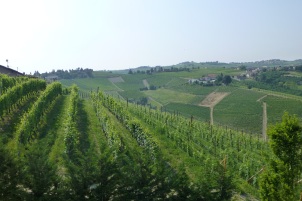
They have been producing Barbaresco from the celebrated Rabaja cru, of which they own 4 hectares, planted by clonal selection. The Rabaja vineyard was purchased by Bruno’s father in the 1950s, and they are one of four different producers of this cru. Originally they were growers, and the first vintage they produced was in 1978. Until the 2013 vintage, the wine was blended with some cabernet, but they stopped in order to focus on single varietals. They mark their vines with red ribbons, and are farming organically, aiming for certification by 2017.
Typically, the wines are vinified in stainless steel for 2-3 weeks, before being matured in French oak. Their oak cask cellar is 15 meters deep and humidity is kept at 90%, with water sprayed to keep the barrels moist.
They produce a range of wines in addition to their celebrated cru Barbarescos, ranging from a 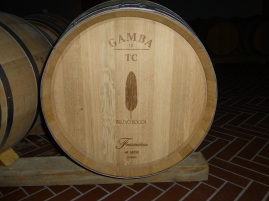 Langhe Rosso to a Barbera d’Asti DOCG, and including one white – a Langhe Chardonnay “Cadet”, grown in the village of Neive.
Langhe Rosso to a Barbera d’Asti DOCG, and including one white – a Langhe Chardonnay “Cadet”, grown in the village of Neive.
We ended our visit with a simply but deliciously prepared lunch at the winery, and Bruno treated us to a sample of his Barbaresco “Maria Adelaide” DOCG, which was originally made in honour of Bruno’s mother.
Tasting Highlights
Bruno Rocca Barbaresco DOCG 2012
Produced from a blend of several vineyards around Neive.
Ripe aromas, fruit driven, spice and red cherry. Round, elegant palate, with soft red cherry fruits. Yummy. 91 pts
Bruno Rocca Barbaresco DOCG Rabaja 2012
The soil is clay, marl and limestone. The average age of the vines is around 50-60 years.
Nose of spice, strawberry, raspberry and floral notes, amazing depth of aroma. Stunning. Soft entry with a mineral, firm backbone on the palate. Red berries, strong spice notes, very long. 93 pts
Bruno Rocca Barbaresco DOCG Rabaja 2006
Aromas of dark fruit, plums, dark cherries, pepper, dark spice. Amazing. Firm and earthy on the palate, with spice, dark fruit and eucalyptus. 95 pts
Bruno Rocca Barbaresco DOCG “Maria Adelaide” 2011
Approximately 2500 bottles produced.
On the nose, wild strawberry jam, sweet spice and earth. On the palate, firm and ripe dark fruit, dried flowers, long finish. 93 pts

Giuseppe Cortese
For our second visit of the day, we walked over to the neighbouring estate of Giuseppe Cortese. The family own 8 hectares of vineyards, and began producing their own wines in 1971. Currently, they produce around 50,000 bottles annually.
Their picturesque Rabaja holdings are laid out just below the winery, over a natural amphitheatre running between 260-315 metres above sea level. Exposure to light is excellent here, with south and south-western exposure, and it is in these old vineyards where they grow their celebrated Nebbiolo. The family also have a large holding in the Trifolera vineyard, with west and south-west exposure, where they grow their Chardonnay, Dolcetto and Barbera.
They laid on a wonderful vertical of Barbaresco Rabaja for us to taste, going back to 1998. They have some of the largest holdings of this cru, around 4 hectares. This was all about getting to know the Rabaja terroir, and how it is expressed in the hands of a very good producer in different vintages.
Tasting Highlights
Giuseppe Cortese Barbaresco DOCG Rabaja 2012
Matured for around 22 months in Slavonian oak.
Subtle aromatics of spice, earth, deep red fruits. Elegant and subtle red fruit on the palate, fresh and delicious. 90 pts
Giuseppe Cortese Barbaresco DOCG Rabaja 1998
Tobacco, earthy, eucalyptus aromas, with gunpowder and dried cranberry. Earthy on the palate, with hints of mushroom, dried berry fruits. Firm tannins, drying. 89 pts
Giuseppe Cortese Barbaresco DOCG Rabaja Riserva 2008
Spices and dark berries on the nose, earthy depth of aromas, smoky. On the palate, intense dark fruits, powerful, smoky and complex, long finish. 91 pts
Giuseppe Cortese Barbaresco DOCG Rabaja Riserva 2006
Still so restrained, but with a depth of aromas of dark forest berries, sweet spice, fresh cigars. Wonderful nose. Ripe dark berries on the palate with balanced acidity and oak spice. Very long. 93 pts
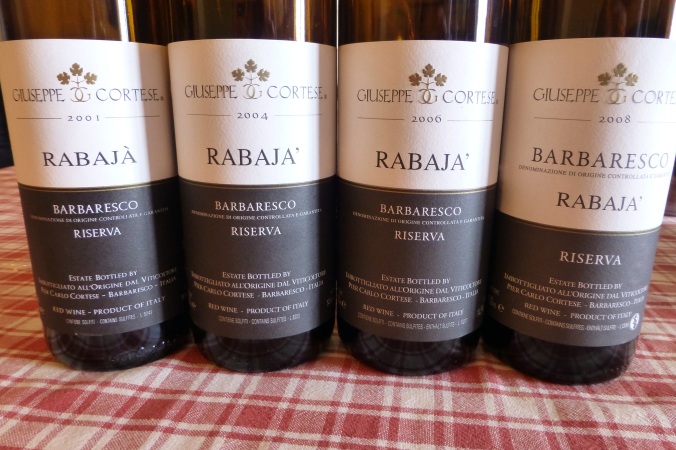
Castello di Neive
Our evening festivities were held at the estate of Castello di Neive, where a tasting and dinner were arranged in the castle, purchased by the Stupino family in the 1960s. The original castle was erected in the 12th century, but it was destroyed before being rebuilt in 1530.
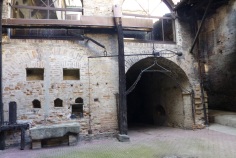 Our visit was organised by Claudio Roggero, the winemaker and director. We were welcomed with a chilled glass of the estate’s 2011 spumante – a brut nature made from 100% Pinot Noir, and produced in the traditional method with a second fermentation in bottle, with 30 months on the lees and then riddled by hand. Even for us champagne connoisseurs, it was a very enjoyable bottle indeed, and accompanied by delicious canapes. Before dinner, we had a chance to tour around the castle, which boasts its own chapel as well as a long history of winemaking.
Our visit was organised by Claudio Roggero, the winemaker and director. We were welcomed with a chilled glass of the estate’s 2011 spumante – a brut nature made from 100% Pinot Noir, and produced in the traditional method with a second fermentation in bottle, with 30 months on the lees and then riddled by hand. Even for us champagne connoisseurs, it was a very enjoyable bottle indeed, and accompanied by delicious canapes. Before dinner, we had a chance to tour around the castle, which boasts its own chapel as well as a long history of winemaking.
We finished with a delicious dinner, which Claudio had arranged to be delivered from a local Michelin starred restaurant, where his aunt works. Needless to say, the pasta was to die for! We were fortunate that Italo Stupino could join us in tasting a vertical of their best wine, the Barbaresco Riserva from the single vineyard of Santo Stefano. This vineyard has been owned solely by the family since 2009. Their holdings total 8.5 hectares, of which 7 ha are planted with Nebbiolo, and 1.5 ha are planted with Barbera. We finished with a 1959 Dom Perignon – after all, it was our friend’s birthday that day.
Tasting Highlights
Barbaresco Santo Stefano Riserva DOCG 2004
On the nose, wonderful depth and concentration of red fruit and earthy notes, rose petals, cherries. Remarkable concentration, freshness, power and elegance at the same time. Fruit, with a touch of tobacco. Stunning. 94 pts
Barbaresco Santo Stefano Riserva DOCG 1999
Only 20,000 bottles made.
Ripe cherries, lavender, earthy, what a concentration, tobacco, wonderful. Palate a little a bit on the rustic side, with red fruit, earthy notes. Silky, juicy texture, long finish. 94 pts
Barbaresco Santo Stefano Riserva DOCG 1985
Earthy, tobacco, cedar, dry lavender, dry pine forest floor. Elegant, earthy, silky smooth on the palate. Long and so very pretty. 95 pts
Dom Perignon 1959
So fruity at first on the nose, with apricots and honey. Then earthy, and eventually showing tobacco, nuts, chocolate and sultanas. Silky smooth on the palate, creamy with honey. Focused, and ever changing. Ripe, apricot jam. So complex and long. 98 pts
To be continued …







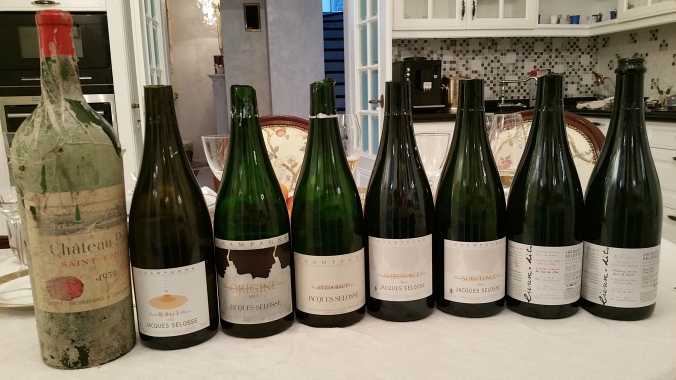
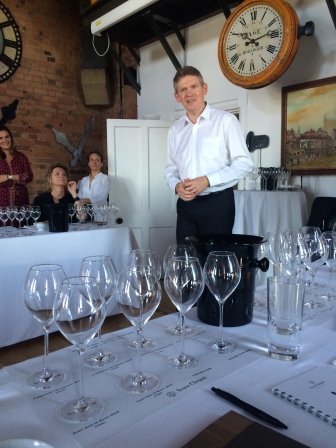

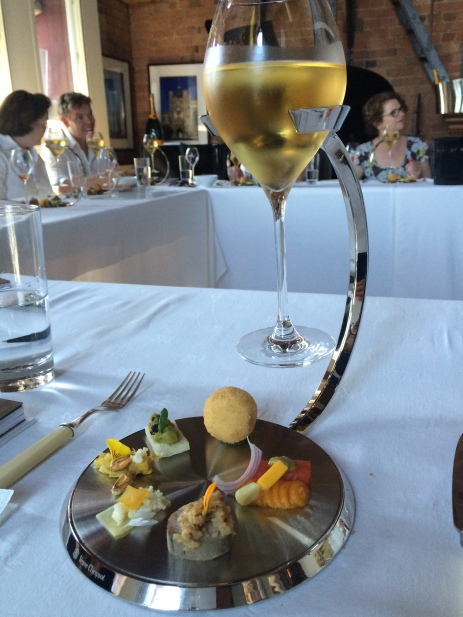

 Crayeres
Crayeres
 Conclusion
Conclusion 
 Langhe Rosso to a Barbera d’Asti DOCG, and including one white – a Langhe Chardonnay “Cadet”, grown in the village of Neive.
Langhe Rosso to a Barbera d’Asti DOCG, and including one white – a Langhe Chardonnay “Cadet”, grown in the village of Neive.



 Our visit was organised by Claudio Roggero, the winemaker and director. We were welcomed with a chilled glass of the estate’s 2011 spumante – a brut nature made from 100% Pinot Noir, and produced in the traditional method with a second fermentation in bottle, with 30 months on the lees and then riddled by hand. Even for us champagne connoisseurs, it was a very enjoyable bottle indeed, and accompanied by delicious canapes. Before dinner, we had a chance to tour around the castle, which boasts its own chapel as well as a long history of winemaking.
Our visit was organised by Claudio Roggero, the winemaker and director. We were welcomed with a chilled glass of the estate’s 2011 spumante – a brut nature made from 100% Pinot Noir, and produced in the traditional method with a second fermentation in bottle, with 30 months on the lees and then riddled by hand. Even for us champagne connoisseurs, it was a very enjoyable bottle indeed, and accompanied by delicious canapes. Before dinner, we had a chance to tour around the castle, which boasts its own chapel as well as a long history of winemaking.


